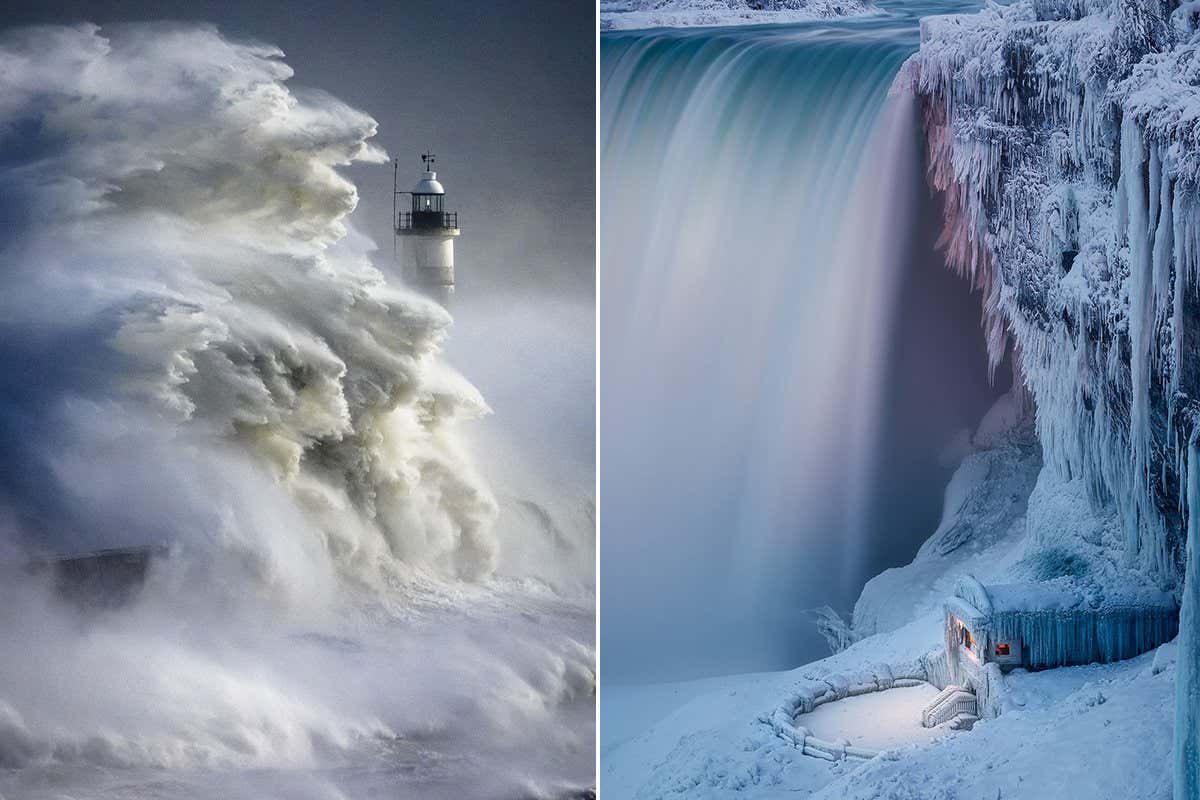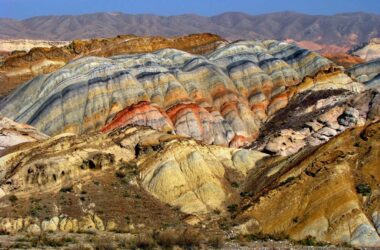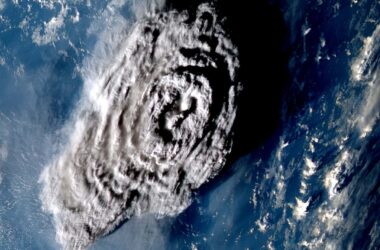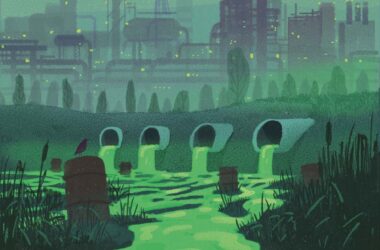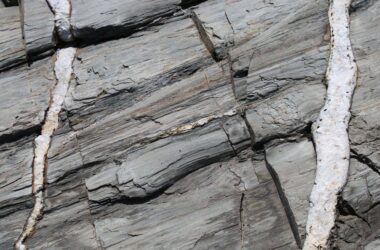A storm captured in full fury and one of the world’s most famous waterfalls coated in ice have been awarded first and second prize respectively in the Royal Meteorological Society’s annual Weather Photographer of the Year competition.
The winning photo, titled “Storm Eunice” by Christopher Ison (pictured above), depicts the eponymous storm hitting the port of Newhaven in the UK at high tide on 17 February. Storm Eunice, one of the UK’s worst storms since 1987, had winds gusting at up to 196 kilometers per hour. It met the criteria for a “weather bomb” or explosive cyclogenesis, which occurs when air pressure drops rapidly.
Ison explained that upon learning about the storm being responsible for the first ever red warning for the south coast, he knew he “had to find a spot to record it – this was going to be big!”
The second-place photo, titled “Frozen” by Zhenhuan Zhou (pictured above), captures parts of Niagara Falls covered in ice. This phenomenon occurs when mist and spray freeze over the top of the waterfall, while water continues to flow beneath the ice.
In March 1848, Niagara Falls’ waters completely stopped flowing when strong winds pushed ice from Lake Erie, blocking the source of the Niagara River.
Zhou’s photograph showcases the intricate detail of the icicles on a building and the rock face, which resemble stalactites and measure several meters long.
All 22 of the shortlisted photographs can be viewed on the Royal Meteorological Society’s website: rmets.org/photography.
Topics:




